Cell Selection Technique for Millimeter-Wave Cellular Systems with Hybrid Beamforming
Abstract
:1. Introduction
2. Preliminaries
2.1. Conventional Cell Selection Technique
2.2. System Model
3. Proposed Cell Selection Technique
3.1. Cell and Beam Synchronization Signal (CBSS)
3.2. Channel Estimation and Cell Selection
4. Simulation
5. Conclusions
Acknowledgments
Author Contributions
Conflicts of Interest
References
- Ngo, H.Q.; Larsson, E.G.; Marzetta, T.L. Energy and Spectral Efficiency of Very Large Multiuser MIMO Systems. IEEE Trans. Commun. 2013, 61, 1436–1449. [Google Scholar]
- Ciuonzo, D.; Rossi, P.S.; Dey, S. Massive MIMO Channel-Aware Decision Fusion. IEEE Trans. Signal Process. 2015, 63, 604–619. [Google Scholar] [CrossRef]
- Shirazinia, A.; Dey, S.; Ciuonzo, D.; Rossi, P.S. Massive MIMO for Decentralized Estimation of a Correlated Source. IEEE Trans. Signal Process. 2016, 64, 2499–2512. [Google Scholar] [CrossRef]
- Rangan, S.; Rappaport, T.S.; Erkip, E. Millimeter-wave cellular wireless networks: Potentials and challenges. Proc. IEEE 2014, 102, 366–385. [Google Scholar] [CrossRef]
- Rappaport, T.S.; Sun, S.; Mayzus, R.; Zhao, H.; Azar, Y.; Wang, K.; Wong, G.N.; Schulz, J.K.; Samimi, M.; Gutierrez, F. Millimeter Wave Mobile Communications for 5G Cellular: It will Work! IEEE Access 2013, 1, 335–349. [Google Scholar] [CrossRef]
- Rappaport, T.S.; Gutierrez, F.; Ben-Dor, E.; Murdock, J.N.; Qiao, Y.; Tamir, J.I. Broadband Millimeter-Wave Propagation Measurements and Models using Adaptive-Beam Antennas for Outdoor Urban Cellular Communications. IEEE Trans. Antennas Propag. 2013, 61, 1850–1859. [Google Scholar] [CrossRef]
- Abbaspour-Tamijani, A.; Sarabandi, K. An Affordable Millimeter-Wave Beam-Steerable Antenna Using Interleaved Planar Subarrays. IEEE Trans. Antennas Propag. 2003, 51, 2193–2202. [Google Scholar] [CrossRef]
- Doan, C.H.; Emami, S.; Sobel, D.A.; Niknejad, A.M.; Brodersen, R.W. Design Considerations for 60 GHz CMOS Radios. IEEE Commun. Mag. 2004, 42, 132–140. [Google Scholar] [CrossRef]
- Pi, Z.; Khan, F. An Introduction to Millimeter-Wave Mobile Broadband Systems. IEEE Commun. Mag. 2011, 49, 101–107. [Google Scholar] [CrossRef]
- Wang, J.; Lan, Z.; Pyo, C.W.; Baykas, T.; Sum, C.S.; Rahman, M.A.; Gao, J.; Funada, R.; Kojima, F.; Harada, H.; et al. Beam Codebook Based Beamforming Protocol for Multi-Gbps Millimeter-Wave WPAN Systems. IEEE J. Sel. Areas Commun. 2009, 27, 1390–1399. [Google Scholar] [CrossRef]
- Hur, S.; Kim, T.; Love, D.J.; Krogmeier, J.V.; Thomas, T.A.; Ghosh, A. Millimeter Wave Beamforming for Wireless Backhaul and Access in Small Cell Networks. IEEE Trans. Commun. 2013, 61, 4391–4403. [Google Scholar] [CrossRef]
- Ayach, O.E.; Rajagopal, S.; Abu-Surra, S.; Pi, Z.; Heath, R.W. Spatially Sparse Precoding in Millimeter Wave MIMO Systems. IEEE Trans. Wirel. Commun. 2013, 13, 1499–1513. [Google Scholar] [CrossRef]
- Zhang, X.; Molisch, A.F.; Kung, S.Y. Variable-Phase-Shift-Based RF-Baseband Codesign for MIMO Antenna Selection. IEEE Trans. Signal Process. 2005, 53, 4091–4103. [Google Scholar] [CrossRef]
- IEEE Standard Part 15.3: Wireless LAN Medium Access Control (MAC) and Physical Layer (PHY) Specifications for High Rate Wireless Personal Area Networks (WPANs) Amendment 2: Millimeter-wave-based Alternative Physical Layer Extension; IEEE: New York, NY, USA, 2009.
- IEEE Standard Part 11: Wireless LAN Medium Access Control (MAC) and Physical Layer (PHY) Specifications; IEEE Std 802.11ad-2012 (Amendment to IEEE Std 802.11-2007); IEEE: New York, NY, USA, 2012.
- Snasel, V.; Kong, L.; Tsai, P.; Pan, J.S. Sink Node Placement Strategies based on Cat Swarm Optimization Algorithm. J. Netw. Intell. 2016, 1, 52–60. [Google Scholar]
- Yang, J.; Li, H.; Li, W.; Liu, X. Research on Task Allocation of Geographic Location Related Mobile Sensing System. J. Inf. Hiding Multimedia Signal Process. 2017, 8, 19–30. [Google Scholar]
- TS 5G.211 v2.6; KT PyeongChang 5G Special Interest Group (KT 5G-SIG); KT 5th Generation Radio Access; Physical Layer; Physical Channels and Modulation (Release 1); KT Corp.: Seongnam, Korea, 2016.
- TS 5G.213 v1.9; KT PyeongChang 5G Special Interest Group (KT 5G-SIG); KT 5th Generation Radio Access; Physical Layer; Physical Layer Procedures (Release 1); KT Corp.: Seongnam, Korea, 2016.
- Kim, Y.J.; Han, D.G.; Cho, Y.S. A Preamble Sequence Design Technique for Efficient Beam ID Detection in Millimeter-Wave Cellular Systems. IEEE Trans. Veh. Technol. 2016, 65, 10106–10111. [Google Scholar] [CrossRef]
- Xia, P.; Yong, S.K.; Oh, J.; Ngo, C. A Practical SDMA Protocol for 60 GHz Millimeter Wave Communications. In Proceedings of the 2008 42nd Asilomar Conference on Signals, Systems and Computers, Pacific Grove, CA, USA, 26–29 October 2008; pp. 2019–2023. [Google Scholar]
- Schniter, P.; Sayeed, A. Channel Estimation and Precoder Design for MmWave Communications_The Sparse Way. In Proceedings of the 2014 48th Asilomar Conference on Signals, Systems and Computers, Pacific Grove, CA, USA, 2–5 November 2014; pp. 273–277. [Google Scholar]
- Bajwa, W.U.; Haupt, J.; Sayeed, A.M.; Nowak, R. Compressed channel sensing: A new approach to estimating sparse multipath channels. Proc. IEEE 2010, 98, 1058–1076. [Google Scholar] [CrossRef]
- Balanis, C. Antenna Theory; Wiley: Hoboken, NJ, USA, 1997. [Google Scholar]
- Pec, R.; Choi, J.-H.; Park, C.-H.; Cho, Y.S. Synchronization Method for Long-Term Evolution-Based Machine-Type Communication in Low-Power Cellular Internet of Things. Int. J. Distrib. Sens. Netw. 2016, 12, 1–14. [Google Scholar] [CrossRef]
- Zepernick, H.J.; Finger, A. Pseudo Random Signal Processing: Theory and Practice; Wiley: Chichester, UK, 2005. [Google Scholar]
- Berndt, B.C.; Evans, R.J.; Williams, K.S. Gauss and Jacobi Sum; Wiley: New York, NY, USA, 1998. [Google Scholar]
- Tauböck, G.; Hlawatsch, F.; Eiwen, D.; Rauhut, H. Compressive Estimation of Doubly Selective Channels in Multicarrier Systems: Leakage Effects and Sparsity-Enhancing Processing. IEEE J. Sel. Top. Signal Process. 2010, 4, 255–271. [Google Scholar] [CrossRef]
- Donoho, D.L.; Tsaig, Y.; Drori, I.; Starck, J. Sparse Solution of Underdetermined Systems of Linear Equations by Stagewise Orthogonal Matching Pursuit. IEEE Trans. Inf. Theory 2012, 58, 1094–1121. [Google Scholar] [CrossRef]
- Wang, J.; Kwon, S. Generalized Orthogonal Matching Pursuit. IEEE Trans. Signal Process. 2012, 60, 6202–6216. [Google Scholar] [CrossRef]
- Goldsmith, A.; Jafar, S.A.; Jindal, N.; Vishwanath, S. Capacity Limits of MIMO Channels. IEEE J. Sel. Areas Commun. 2003, 21, 684–702. [Google Scholar] [CrossRef]
- Cho, Y.S.; Kim, J.; Yang, W.Y.; Kang, C.G. MIMO-OFDM Wireless Communications with MATLAB; Wiley: Chichester, UK, 2011. [Google Scholar]
- Akdeniz, M.R.; Liu, Y.; Mathew, K.; Sun, S.; Rangan, S. Millimeter Wave Channel Modeling and Cellular Capacity Evaluation. IEEE J. Sel. Areas Commun. 2014, 32, 1–15. [Google Scholar] [CrossRef]
- 3GPP TR 25.996; Spatial Channel Model for Multiple Input Multiple Output Simulations; Technical Report, Release 11; ETSI: Valbonne, France, 2012.
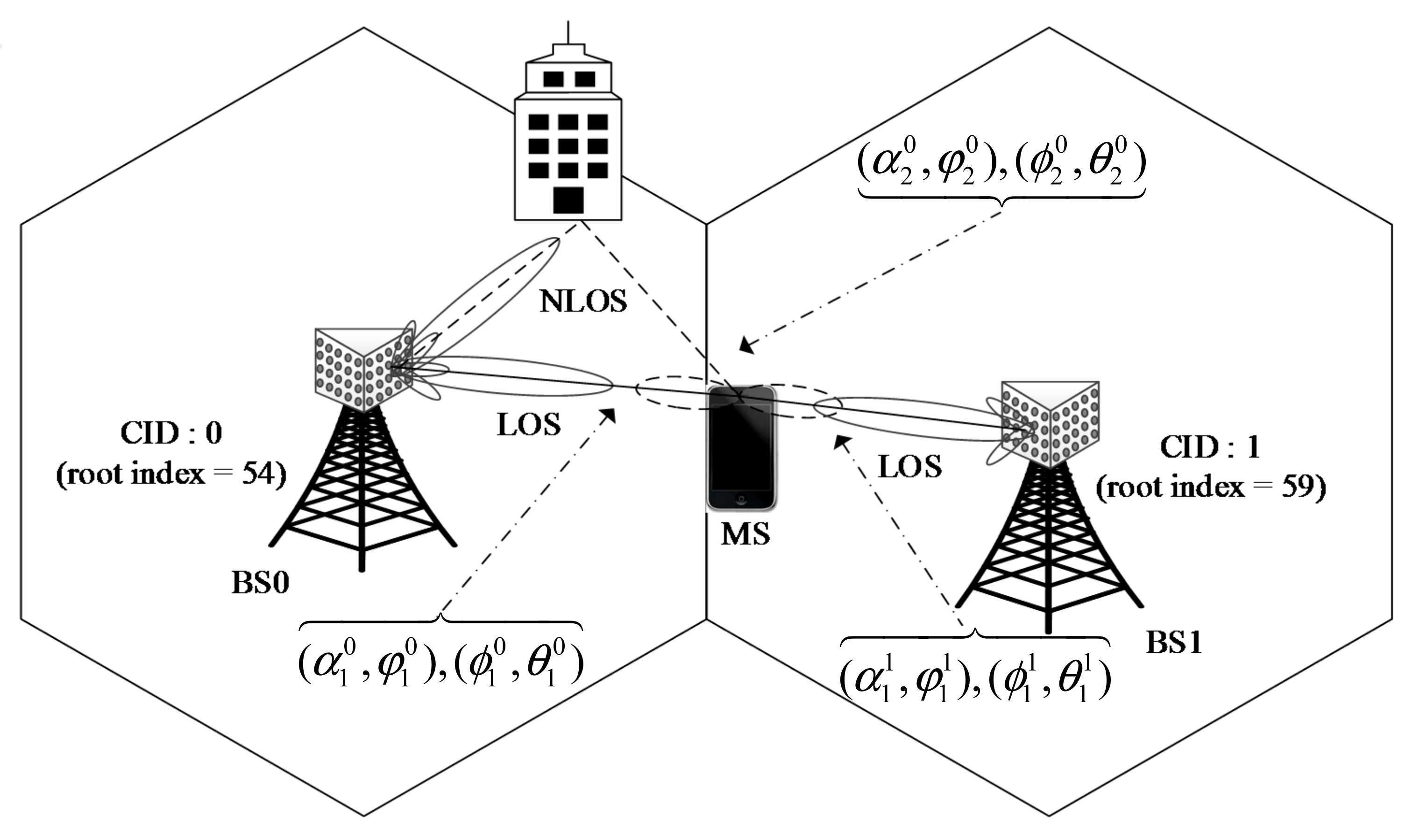
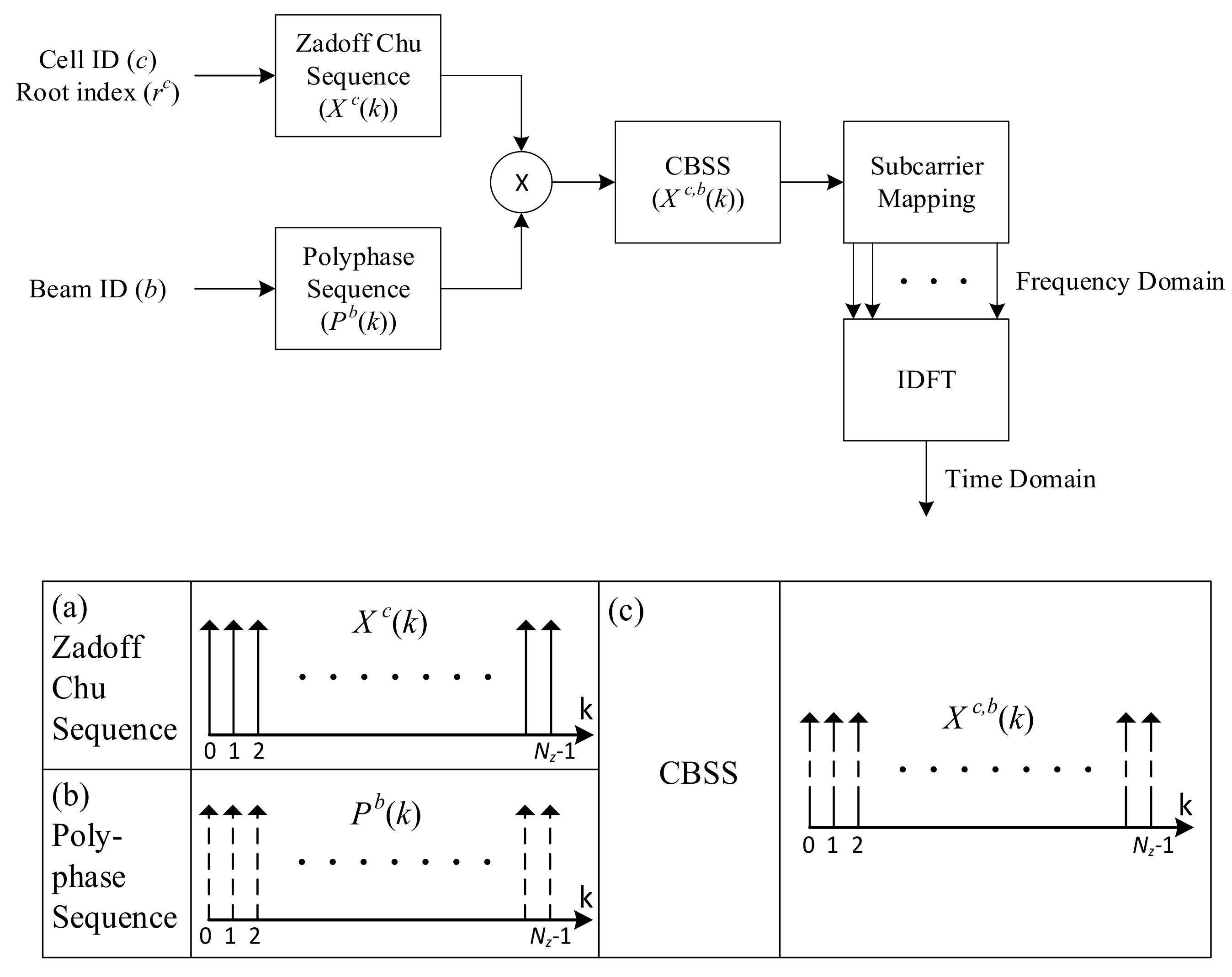


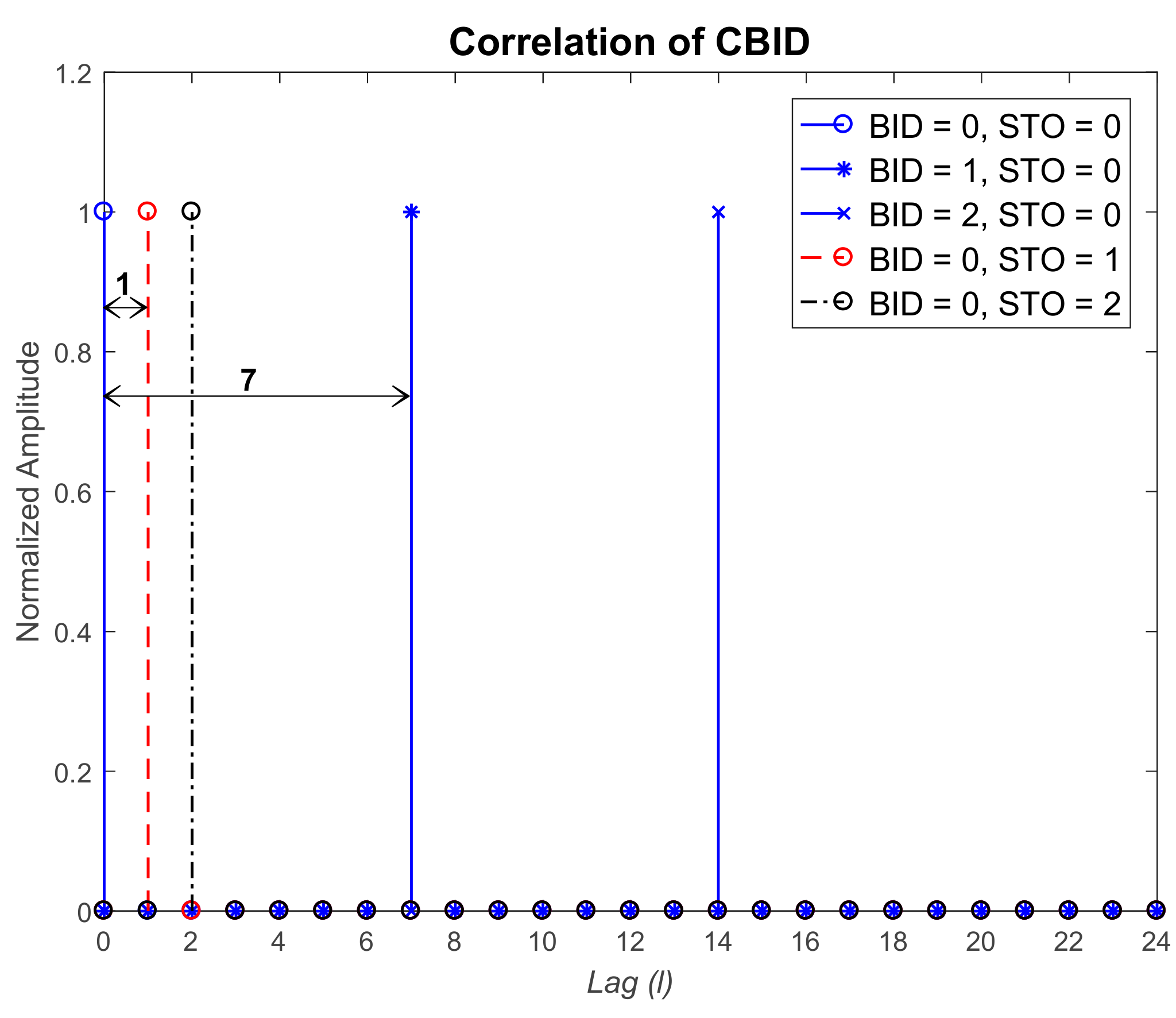
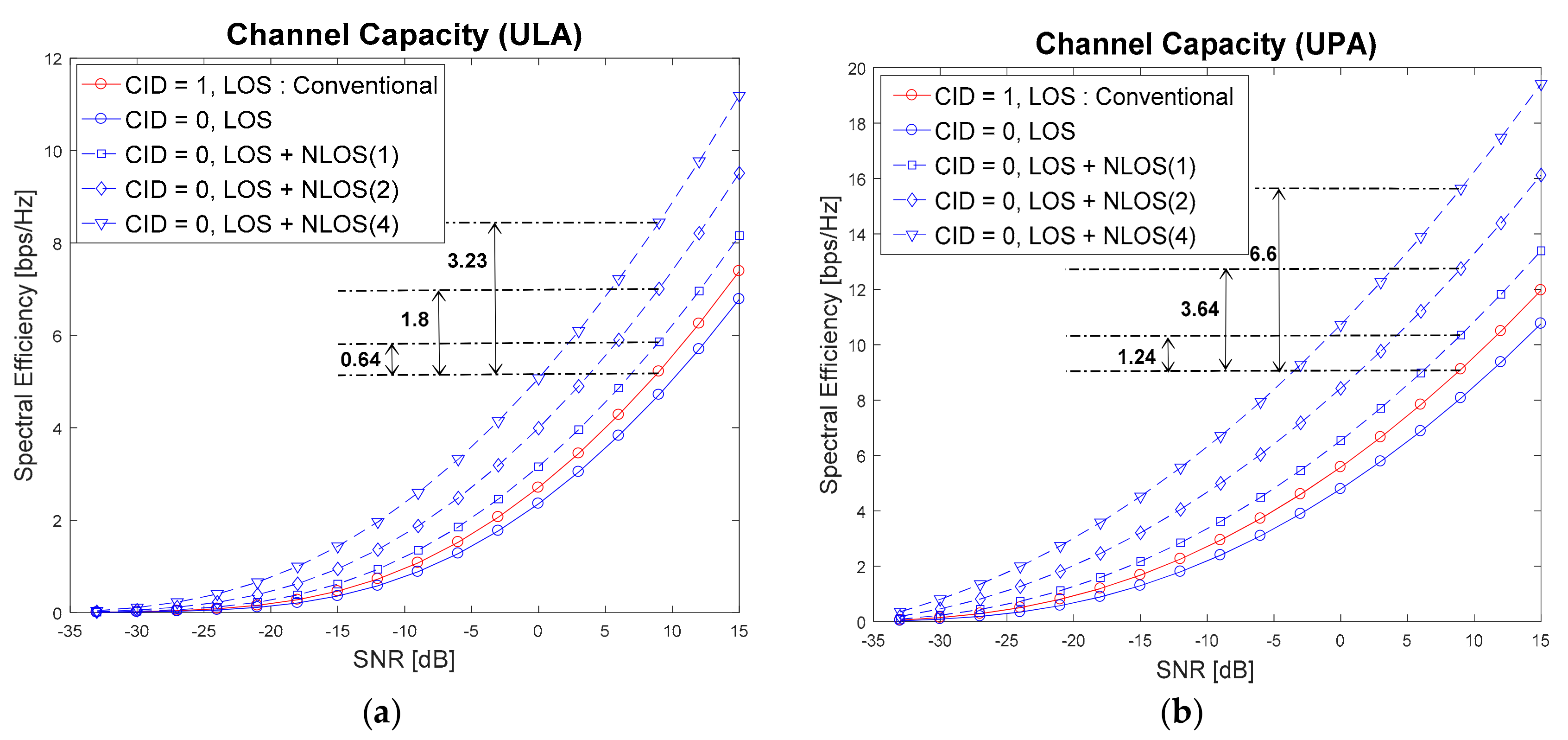
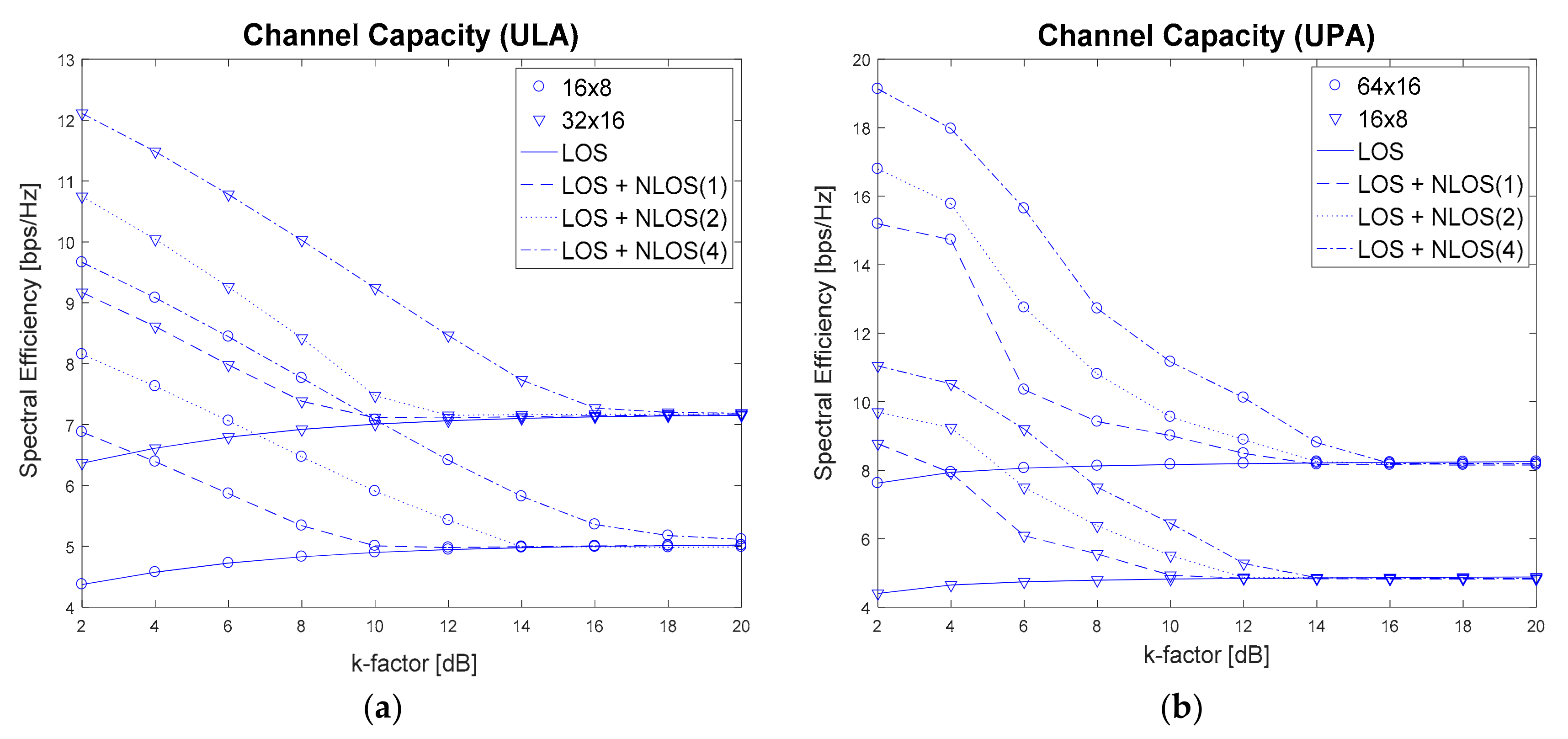
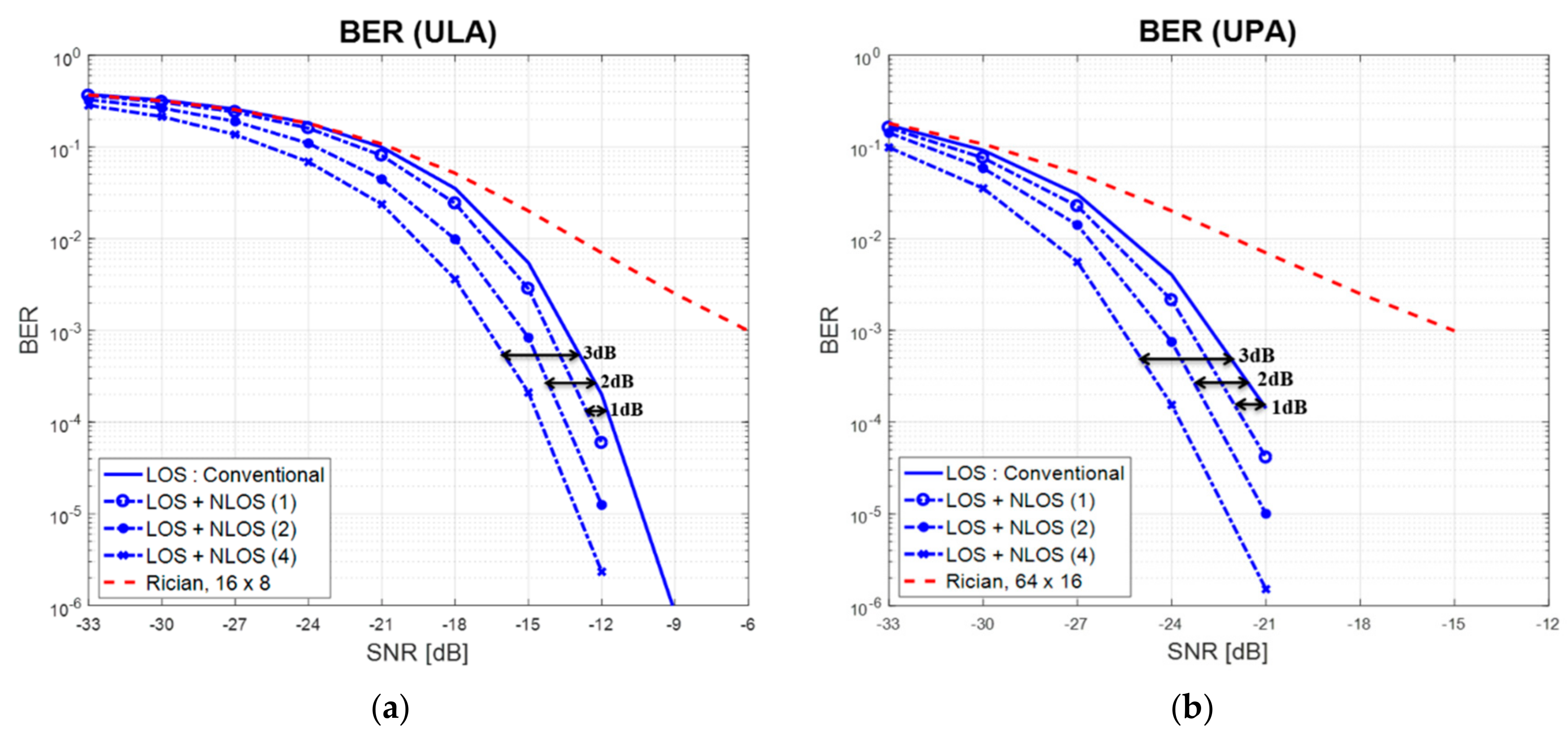
| Factor | Conventional Technique | Proposed Technique | |
|---|---|---|---|
| Processing Time | |||
| Example | 3195 μs | 1597 μs | |
| 799 μs | |||
| 200 μs | |||
| Number of complex multiplications | PSS + SSS | PSS + SSS + CBSS | |
| Example | 1,364,992 | 1,411,328 | |
| 705,664 | |||
| 176,416 | |||
© 2017 by the authors. Licensee MDPI, Basel, Switzerland. This article is an open access article distributed under the terms and conditions of the Creative Commons Attribution (CC BY) license (http://creativecommons.org/licenses/by/4.0/).
Share and Cite
Khan, M.S.; Maeng, S.J.; Cho, Y.S. Cell Selection Technique for Millimeter-Wave Cellular Systems with Hybrid Beamforming. Sensors 2017, 17, 1461. https://doi.org/10.3390/s17061461
Khan MS, Maeng SJ, Cho YS. Cell Selection Technique for Millimeter-Wave Cellular Systems with Hybrid Beamforming. Sensors. 2017; 17(6):1461. https://doi.org/10.3390/s17061461
Chicago/Turabian StyleKhan, Mohammed Saquib, Sung Joon Maeng, and Yong Soo Cho. 2017. "Cell Selection Technique for Millimeter-Wave Cellular Systems with Hybrid Beamforming" Sensors 17, no. 6: 1461. https://doi.org/10.3390/s17061461





